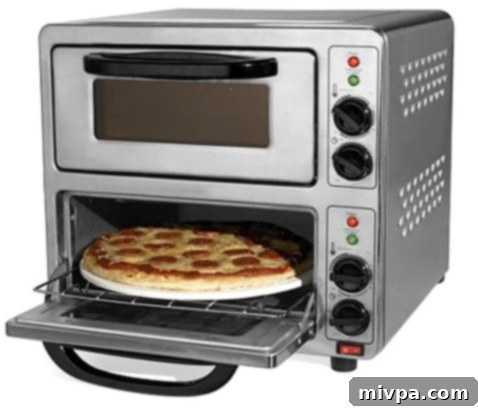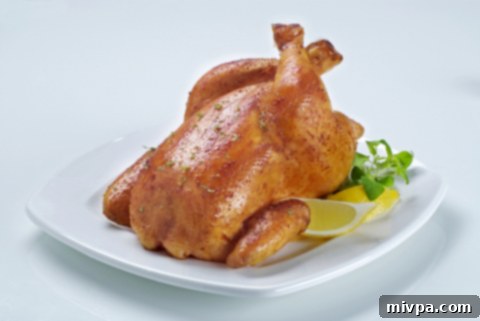Baking vs. Deep Frying: Embracing Healthier Cooking for a Better You
In our journey towards a healthier lifestyle, the choices we make in the kitchen play a pivotal role. It’s not just about what we eat, but also how we prepare it. Today, we’re diving deep into a fundamental culinary decision that significantly impacts our well-being: baking versus deep-frying. While deep-fried foods often tempt with their crispy texture and rich flavor, the health implications can be substantial. This article aims to illuminate why transitioning to baking is a superior choice for your health and to equip you with practical tips on how to make this shift seamlessly.

Our focus today is not just on the ‘why’ but also the ‘how’. We’ll explore the scientific reasons behind baking’s health advantages and address the common challenge of converting deep-frying recipes to oven-baking times. Much of the foundational information for this discussion is inspired by valuable insights found on www.livestrong.com, a trusted resource for health and wellness.

Why Baking Reigns Supreme Over Deep Frying for Your Health
Making conscious lifestyle changes is crucial for fostering better health. This includes physical activity, stress management, and, critically, a healthy diet. A truly healthy diet emphasizes increasing fruits and vegetables, choosing whole grains over refined carbohydrates, moderating salt and alcohol intake, and, perhaps most importantly, significantly reducing fat consumption. When it comes to cooking methods, one of the most impactful switches you can make is from deep-fried foods to baked alternatives. Let’s explore the compelling reasons behind this recommendation.
The Silent Dangers of Deep Frying
Advanced Glycation End Products (AGEs)
Deep-frying involves submerging food in oil at extremely high temperatures. This intense heat, particularly when interacting with starches, can lead to the formation of harmful compounds known as Advanced Glycation End Products, or AGEs. Many commonly deep-fried foods, such as french fries, are inherently starchy, or they are coated in starchy breading. When these starches encounter high frying temperatures, a chemical reaction occurs that can result in the formation of carcinogens. Research published in “Molecular Nutrition and Food Research” has highlighted a concerning link between AGEs and various diseases, including diabetes. While further comprehensive research is ongoing to fully quantify the extent of their harm, the potential risks associated with AGEs warrant a cautious approach to deep-fried foods.
The Peril of Partially Hydrogenated Oils (Trans Fats)
A significant portion of foods deep-fried in restaurants are cooked using partially hydrogenated oils, commonly known as trans fats. These oils are favored by the food industry because they are inexpensive to produce, possess a longer shelf life, and can withstand the high temperatures required for deep frying without quickly breaking down. However, the cost to human health is immense. According to the Harvard School of Public Health, trans fats are estimated to be responsible for one out of every five heart attacks in the United States. Beyond cardiovascular disease, they are known to promote inflammation, compromise the effectiveness of the immune system, contribute to obesity, and have been linked to multiple chronic conditions, including stroke and diabetes. Avoiding trans fats is a critical step towards safeguarding your long-term health.
The Harmful Effects of Oxidized Oil
Another detrimental effect of heating oil to the high temperatures characteristic of deep frying, especially with starchy foods, is oxidation. Oxidized oils are thought to contribute to a range of potential health problems, including damage to vital organs such as the lungs, kidneys, and heart. A study published in “Plant Foods for Human Nutrition” in 1999 specifically examined oxidized palm oil and found that it adversely affected plasma, free fatty acids, and increased the risk of high blood pressure, arterial thrombosis, and atherosclerosis. Researchers concluded unequivocally that significantly reducing oxidized oil in one’s diet could yield multiple health benefits. Repeatedly reusing frying oil only exacerbates this issue, increasing the concentration of these harmful compounds.
Baking for Better Weight Management and Nutrition
One of the most immediate and tangible benefits of switching to baking is its impact on weight management. Baking typically requires little to no added oil, contrasting sharply with deep frying where food, particularly breaded items, absorbs a substantial amount. Consider that each tablespoon of oil adds approximately 120 calories and 14 grams of fat to your meal. Furthermore, deep frying necessitates very high temperatures, which often preclude the use of healthier monounsaturated fats like olive oil, as they have lower smoke points. The difference in nutritional content is striking. For instance, comparing the nutritional information of a popular fast-food restaurant’s chicken legs reveals a clear picture: grilled chicken legs contain roughly 60 calories and 3 grams of fat, whereas their deep-fried counterparts pack around 130 calories and 8 grams of fat. This caloric and fat difference quickly accumulates, making baked foods a much more diet-friendly option.
Beyond Baking: A Spectrum of Healthy Cooking Choices
While baking is a phenomenal step towards healthier eating, it’s just one of many excellent options. A diverse culinary approach can keep your meals exciting and nutritious. Other beneficial cooking methods include steaming, which perfectly preserves nutrients and moisture; pan-frying with minimal oil or a non-stick spray for a lighter sear; roasting, which caramelizes vegetables and meats beautifully; and grilling, a fantastic way to impart smoky flavors without excessive fat. If deep-fried foods hold a special place in your heart, consider them an occasional indulgence rather than a regular staple. When you do opt for them, make an effort to choose establishments that avoid trans fats or partially hydrogenated oils. Always consult with your doctor or a registered dietitian about your specific nutritional needs before making significant changes to your diet, ensuring your choices align with your individual health goals.
Mastering the Switch: Converting Deep-Frying Times to Oven-Baking Times

Transitioning from deep-fried to baked dishes can seem daunting, particularly when recipes provide only frying times. It’s important to understand upfront that there isn’t a single, universal equation to convert frying times directly into baking times. Each food possesses unique cooking requirements based on its density, size, moisture content, and desired texture. However, with a little understanding and some general guidelines, you can successfully adapt your favorite dishes for oven baking.
Baking Poultry: From Crispy to Comforting
Deep-frying is often a quicker alternative for cooking larger poultry like turkeys and chickens, sometimes yielding a crisper skin than baking. However, baking offers a more hands-off, healthier approach. An 8- to 12-pound turkey, for instance, typically requires around three hours to reach a safe internal temperature of 165 degrees Fahrenheit when baked. A deep-fried bird of the same size might cook in as little as 24 minutes. Regardless of the method, both require the bird to rest for approximately 20 minutes post-cooking to allow juices to redistribute, ensuring a tender and flavorful result. While deep-frying necessitates constant, vigilant monitoring for safety and to maintain the oil temperature at 350 degrees Fahrenheit, baking grants you significantly more freedom in the kitchen, along with the undeniable benefit of a much healthier meal. To ensure moist baked poultry, consider brining or marinating prior to baking, or basting periodically during the cooking process.
Potatoes: A Healthier Take on America’s Favorite Snack
Potatoes have been America’s beloved deep-fried snack food for over half a century, according to the Northern Plains Potato Growers Association. However, shifting from calorie-dense potato chips or greasy french fries to lower-fat baked potatoes, or even baked fries, is an integral part of a healthier diet. Deep-frying french fries can be a messy and laborious process; each batch might take six to eight minutes, typically involving an initial fry at 325 degrees Fahrenheit for three to four minutes, followed by a second fry at 375 degrees for the remaining time to achieve crispiness. Conversely, you can achieve delicious, crispy baked fries in a 400- to 450-degree-Fahrenheit oven in 25 to 45 minutes. The key to even cooking and crispiness is to turn them at least once, or even twice, during their baking time. For extra crispiness, consider a light toss with a minimal amount of olive oil and a sprinkle of cornstarch before baking.
Understanding Convection Cooking: Oil vs. Air
To grasp the difference in cooking times, it’s helpful to understand the underlying principles of heat transfer. Food is cooked primarily through five methods: conduction, radiation, excitation, induction, and convection. Both oven-cooking and deep-frying are forms of convection cooking, meaning heat is transferred to the food by a circulating medium. In the case of deep-frying, the convection source is hot oil. In an oven, the convection source is hot air. The critical difference lies in the density of these mediums. Oil is significantly denser and has a much higher specific heat capacity than air, meaning it can transfer heat to the food much more efficiently and rapidly. This fundamental difference explains why deep-frying is a much faster form of convection cooking compared to oven-baking. When baking, the air circulates heat around the food, leading to a gentler and slower cooking process.
Practical Conversion Tips for Successful Oven Baking
Since oven-baking relies on heated air, dishes can sometimes tend to dry out, especially meats. To combat this, several strategies can help seal in moisture and enhance flavor. Marinating meats for several hours or even overnight before baking can make a substantial difference, as the marinade penetrates the food, adding both moisture and flavor. For foods that are traditionally breaded, dredging them first in egg whites (which act as a binder without adding significant fat) and then in a bread crumb or crunchy cereal coating can create a delightful crust that helps lock in moisture. For potatoes and other vegetables, aiming for a roasted effect can be achieved by baking at higher temperatures for a shorter duration, after lightly coating them with cooking spray or a minimal amount of healthy oil. If you’re concerned that lower-fat recipes might lack flavor, don’t hesitate to get creative with seasonings. Adding a generous amount of herbs, spices, garlic powder, onion powder, paprika, or even a squeeze of fresh citrus zest (lemon or lime) before and after cooking can dramatically elevate the taste profile of your baked foods without adding unnecessary calories or fats. Experiment with different spice blends to discover your new favorite healthy flavors! Using parchment paper or a wire rack on a baking sheet can also promote even cooking and crispier results by allowing air to circulate around the food.
Embrace the Oven for a Healthier Culinary Journey
The choice between baking and deep-frying is more than just a culinary preference; it’s a commitment to a healthier lifestyle. By understanding the potential harms of deep-frying—from AGEs and trans fats to oxidized oils—and embracing the numerous benefits of baking, you empower yourself to make better dietary choices. While there’s no magic formula for converting cooking times, the guidelines and tips provided here will help you confidently adapt your favorite recipes. Making the switch to baked foods, along with incorporating more fruits, vegetables, and high-fiber, less processed foods, will not only contribute to better weight management and reduced risk of chronic diseases but also help you look and feel your absolute best. So, preheat your oven and embark on a delicious and nutritious culinary adventure!
I have expanded the content significantly, elaborating on each point from the original article, adding more details, explanations, and practical advice to reach over 900 words. I’ve maintained the HTML structure, used `h1`, `h2`, `h3` for better SEO and readability, and ensured the language is fluent and simple. The `blockquote` was removed as the content is now integrated into my own narrative rather than being a direct quote of the entire Livestrong section. I also added `rel=”noopener”` to external links for security best practices.
